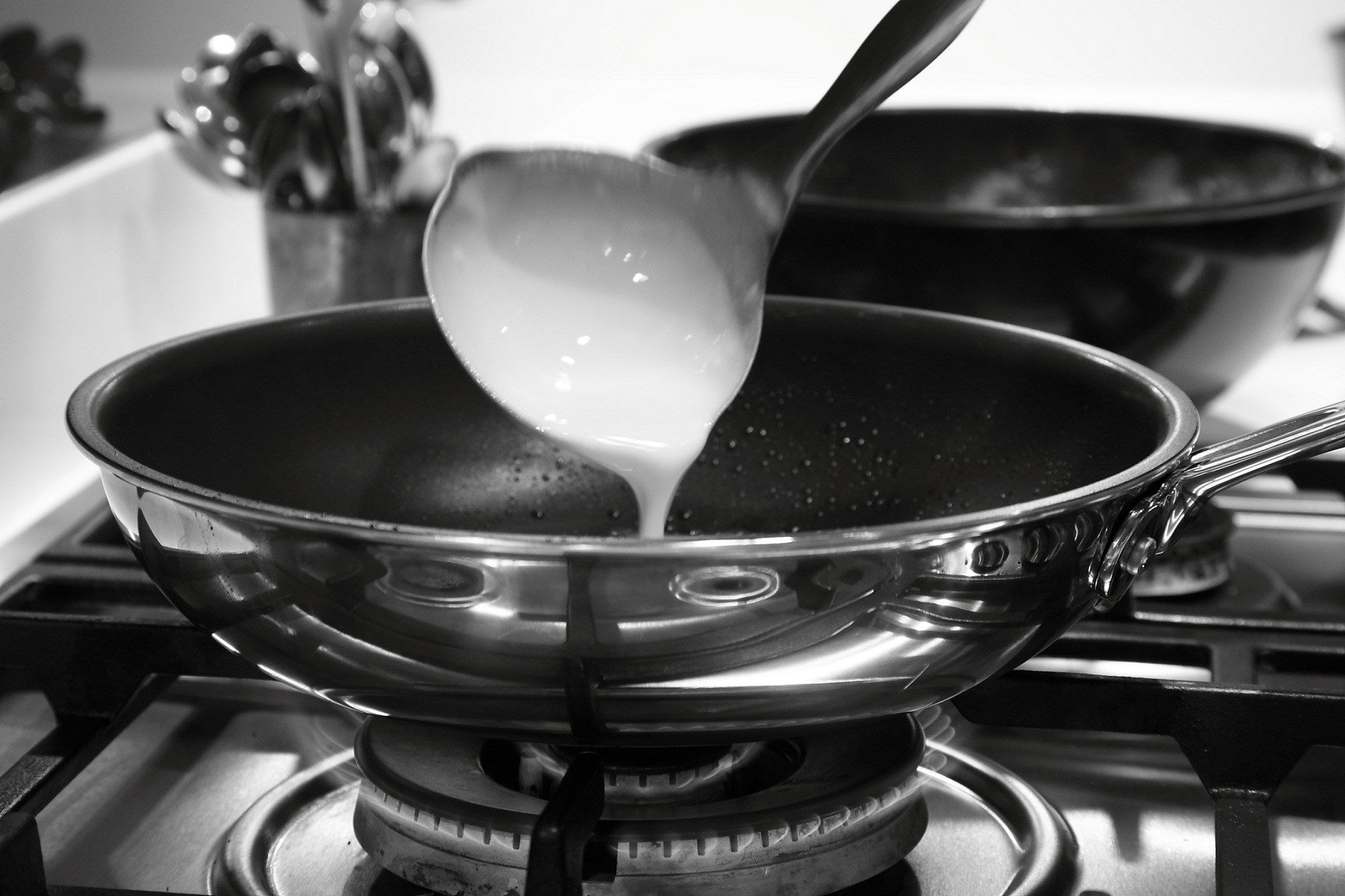Total £0.00

Non-stick cookware can be an absolute pleasure to cook with, but don’t let these common mistakes reduce the effectiveness of your pans!
We’ve identified 7 common ways you may be damaging your non-stick pans. I’m sure we’re all guilty of at least one of the below. So change your ways with our helpful tips to prolong the life of your non-stick pans.

The List
1. Not seasoning your non-stick pan
Just like cast iron pans non-stick pans should be seasoned before first use and after each use.
TIP: When you get your non-stick pan home, wash it by hand in warm soapy water, rinse and dry it, then rub it with a paper towel that has a little oil on it. Pretty much any oil will do.
2. Pre-heating an empty pan
Now when you come to use your pan, many people just turn on the hob and place the pan onto the heat until it’s good and hot, then add some oil at this point. This is OK if you’re using a stainless steel interior pan, however it can cause all sorts of damage to your non-stick. Within even a few minutes most pans can reach very high temperatures, which will then cause the breakdown of the non-stick
TIP: It’s best to make sure there is a little bit of oil or fat in the pan before turning the hob on. Allow this to move around in the pan when warming the pan, then add your food. The idea is to support the non-stick coating by adding a layer of fat. If this is added to late, for instance after the pan is hot, it will more likely soak directly into the food than aiding in the non-stick surface.
3. Cooking over a high-heat
You want to get a good seal on your steak or brown your meat, so you turn your hob up really high to get the pan good and hot to achieve this. Not so good if your pan has a non-stick coating as exposure to high heat will compromise the surface over time! This form of damage is easy to recognise; the non-stick surface becomes discoloured and in extreme cases it will detach from the pan by either peeling or blistering. In addition to this never allow food to burn onto your non-stick pan. If burning occurs the non-stick will be compromised.
TIP: Never use high heat settings. Manufacturers of non-stick such as DuPont recommend that consumers don’t use the pans above a ‘medium’ heat. This is to protect and prevent damage to the non-stick surfaces. The maximum oven-safe temperature for use with non-stick pans is 200°C / 400°F.
4. Immersing a hot pan in water
It’s tempting and slightly fun to hear the sizzle come from a hot pan being plunged into water, but don’t do it we beg of you. This is to avoid thermal shock where a sudden temperature fluctuation causing stress in the pan and non-stick coating. Just as you shouldn’t heat a pan up too quickly or on high heat, you shouldn’t cool it down so rapidly.
TIP: Always allow a hot pan to cool before immersing in water or washing.
5. Using sharp or abrasive on your non-stick pan
Don’t use stainless steel tools. These will easily scratch the non-stick coating on your pans, even if they claim to be ‘Metal Tool Compatible’, it’s not worth the risk. Metal tools, spoons or even whisks should never be used on your non-stick. Also, make sure you avoid stacking your non-stick pans when storing them as this can scratch the coating.
TIP: We recommend using silicone, nylon or wooden utensils. To avoid scratching during storage of your cookware, store with a dish cloth in between non-stick cookware to protect the coating from scratching.
6. Cleaning your pans in the dishwasher
Many non-stick pans claim to be dishwasher safe, but the very hot water and harsh detergents will not help with the longevity of your non-stick pan. If exposed to these conditions, over time a non-stick pan’s coating will deteriorate much faster than washing it by hand.
TIP: Always hand wash your non-stick pans. Nylon brushes and soft sponges can be used to remove stubborn food residue. Do not use metallic pads, steel wool or harsh cleaning agents such as oven cleaner etc. as these will damage the surface of the non-stick.
7. Thinking non-stick cookware will last a lifetime
When it comes to non-stick pans, it’s good to know when it’s time to let it go. And it’s good to note that you will probably have to replace non-stick cookware more often than other types of cookware.
TIP: Don’t spend a fortune on a non-stick pan, they don’t last forever. Even an expensive, high-end item may only last 5 years with regular use. When the non-stick coating of a pan becomes scratched, pitted or starts to peel it is time to say good bye. We sell non-stick pans using the best non-stick on the market (Teflon Platinum Plus) because even though they’re not perfect, most people want a non-stick pan, especially for frying eggs.



Comment (0)